| Rated Voltage (V) |
Pole | Rated Current (A) |
Breaking Capacity Ics (A) |
Installation Method |
| DC 400-1000V | 1P | 1.2.3.4.6.8.10.12.15.20.25.30A | 25000A | TH-35 DIN-Rail Mounting |
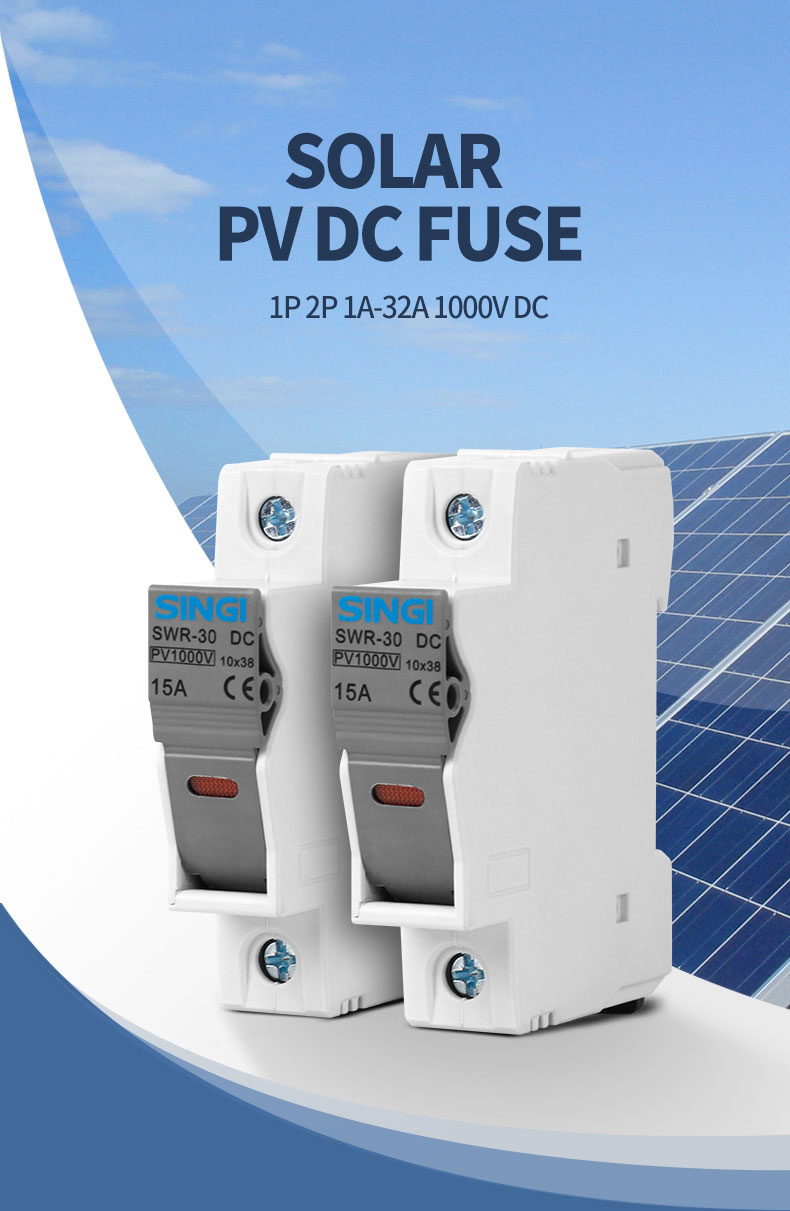
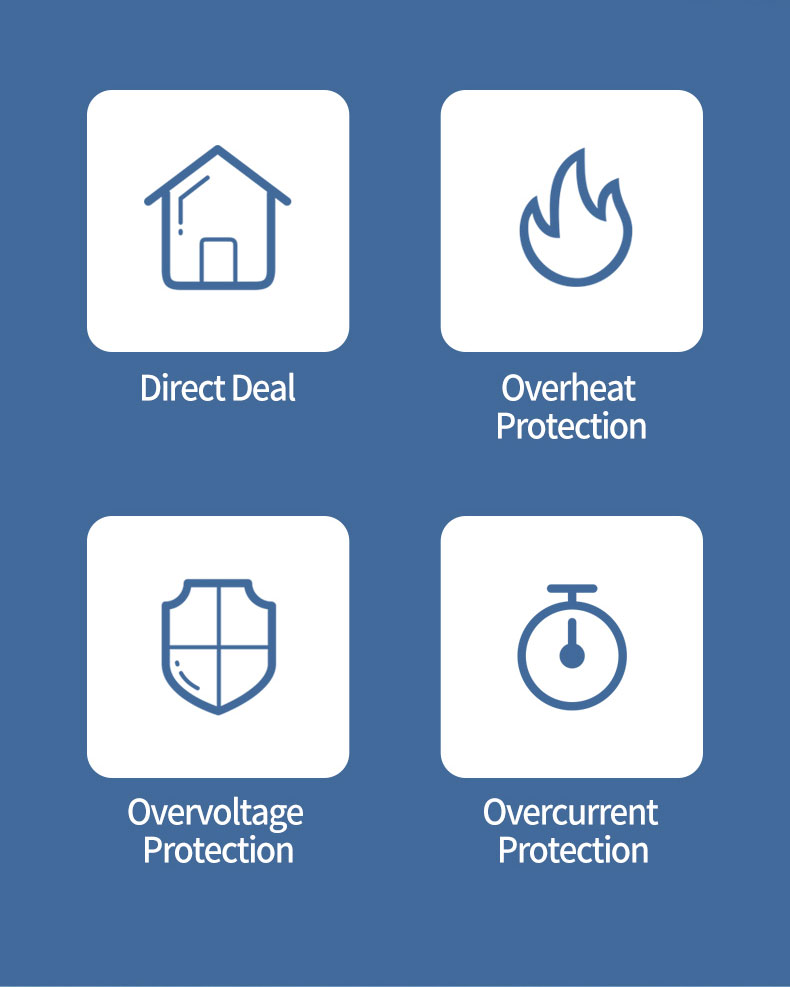
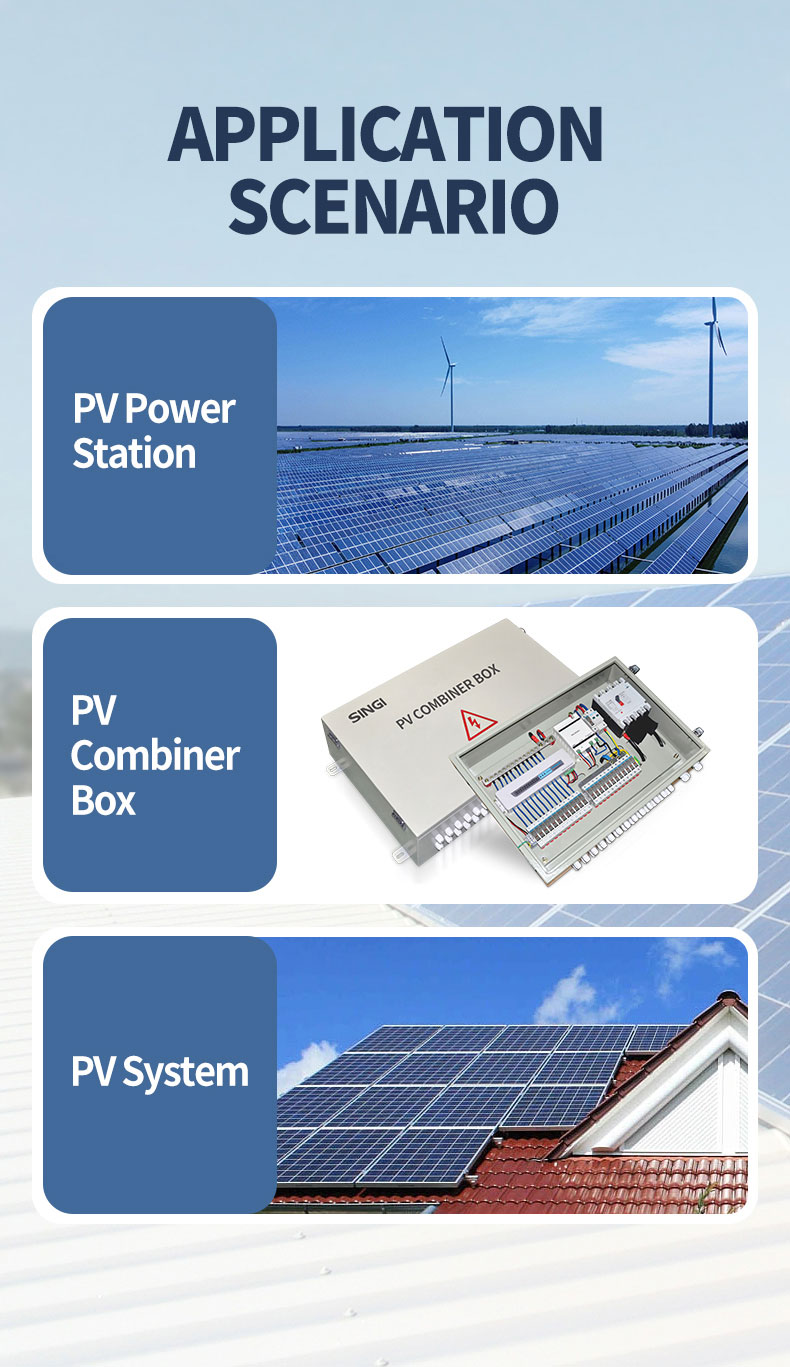

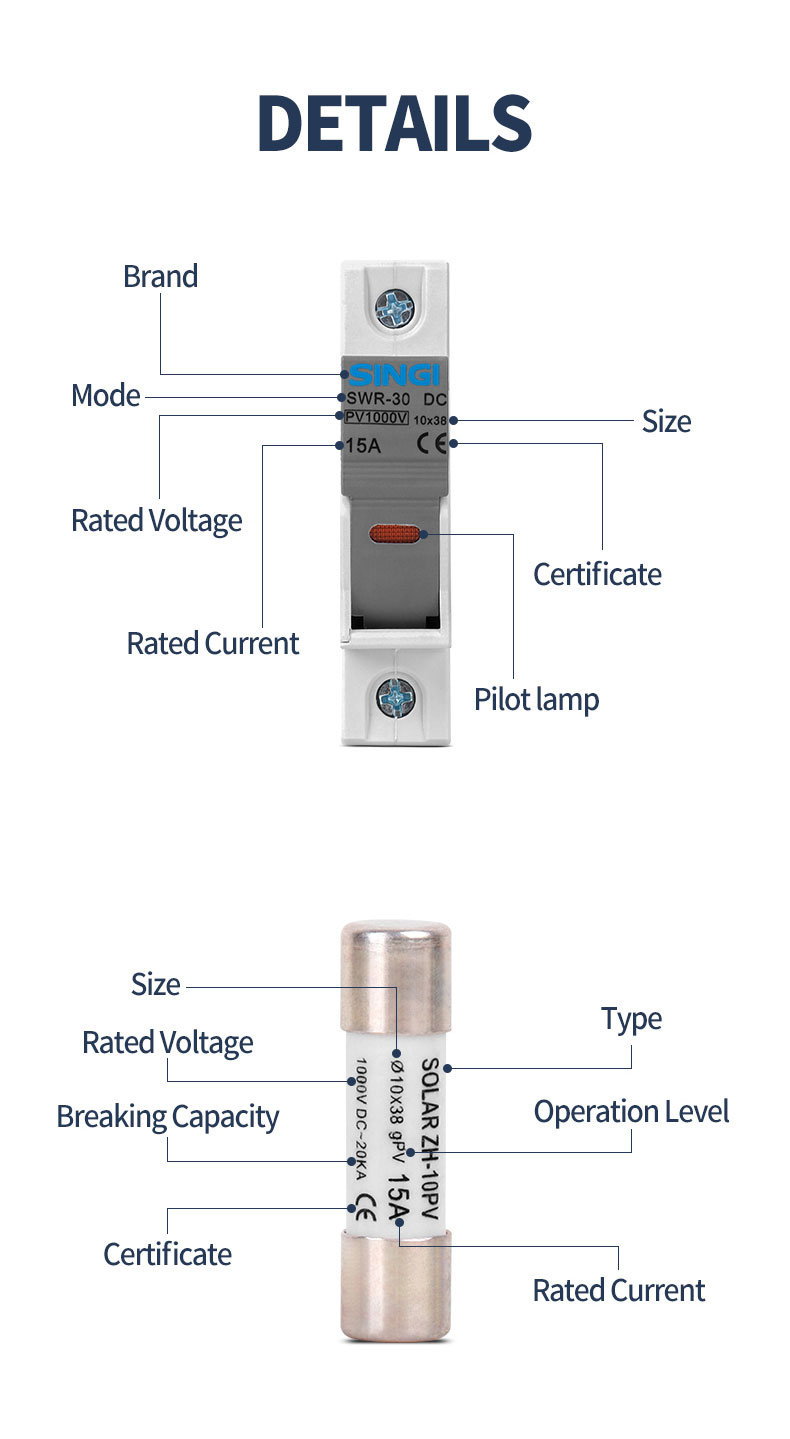
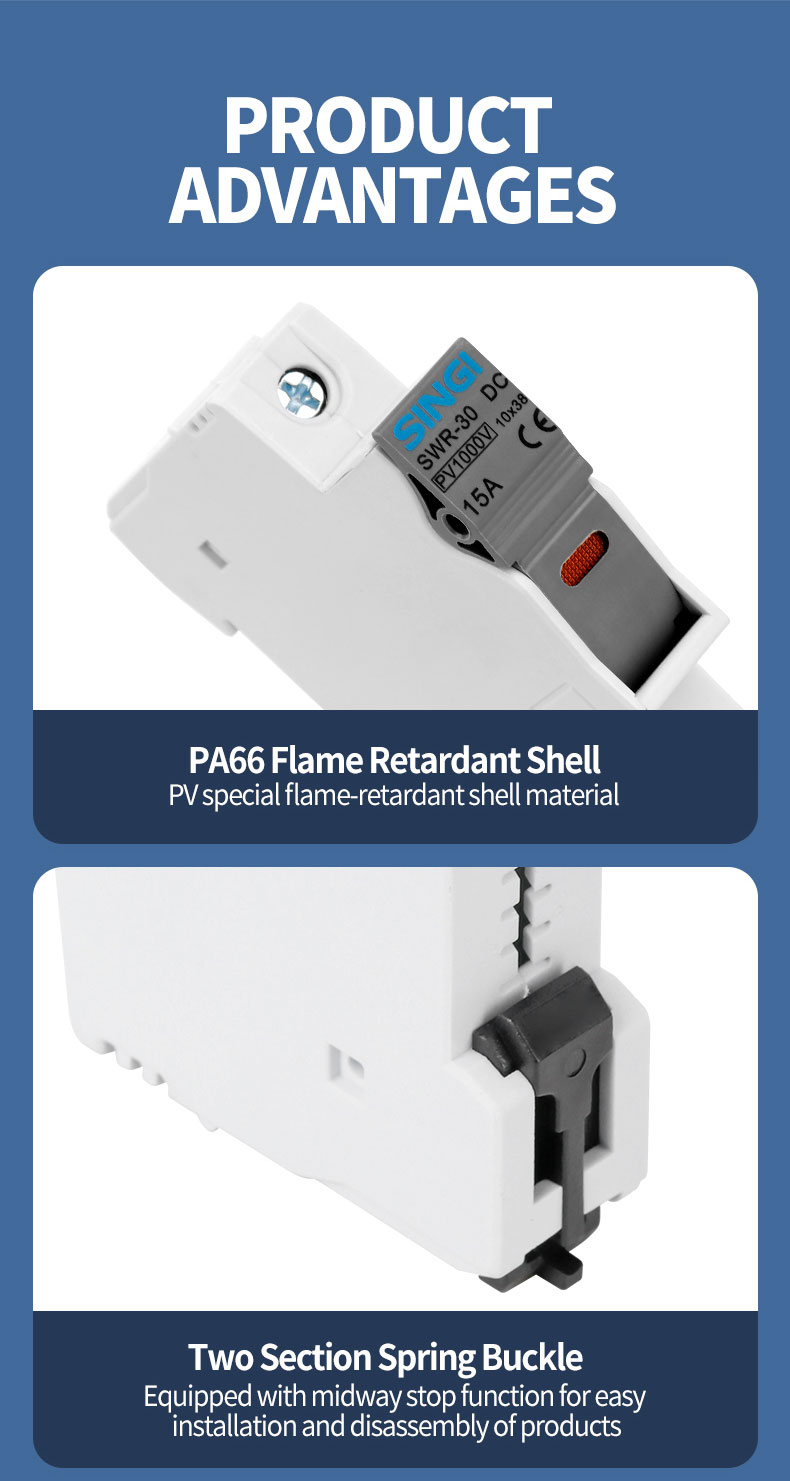
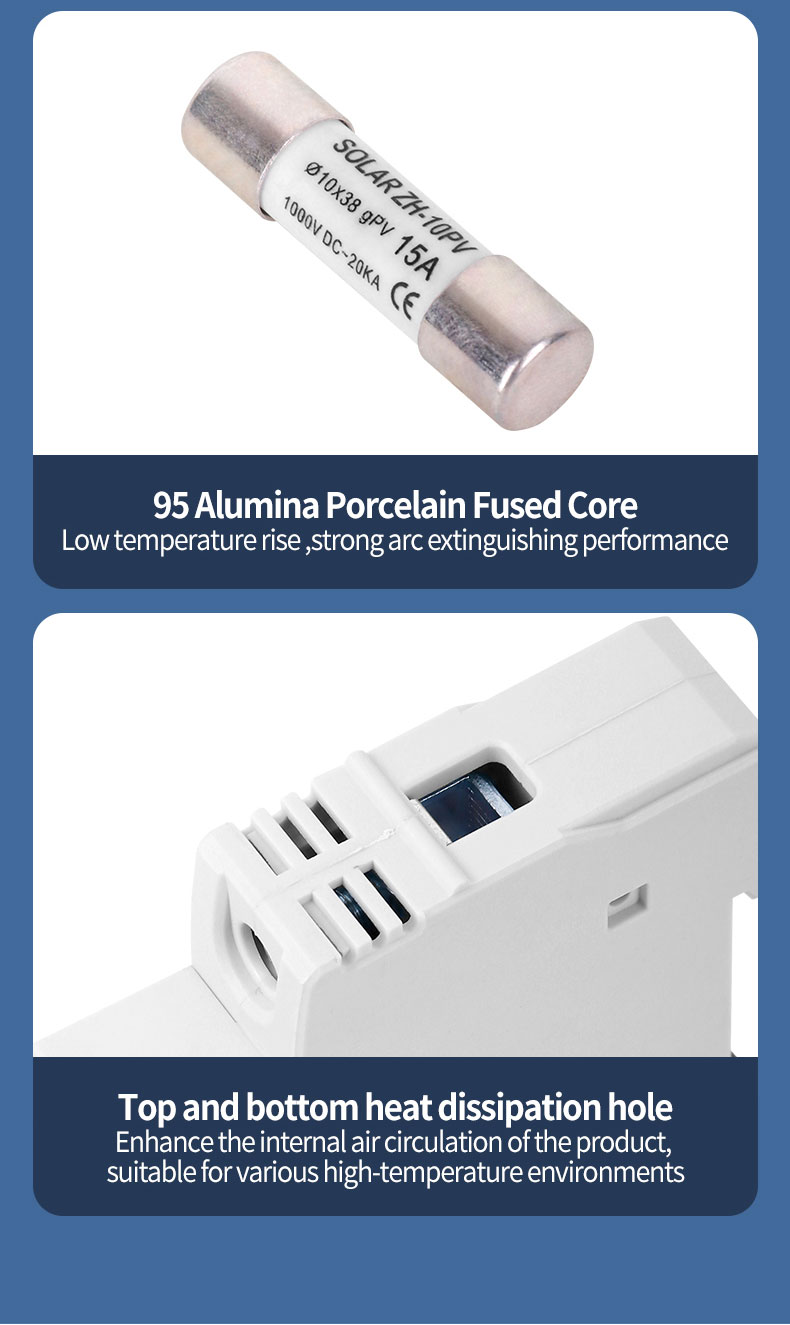
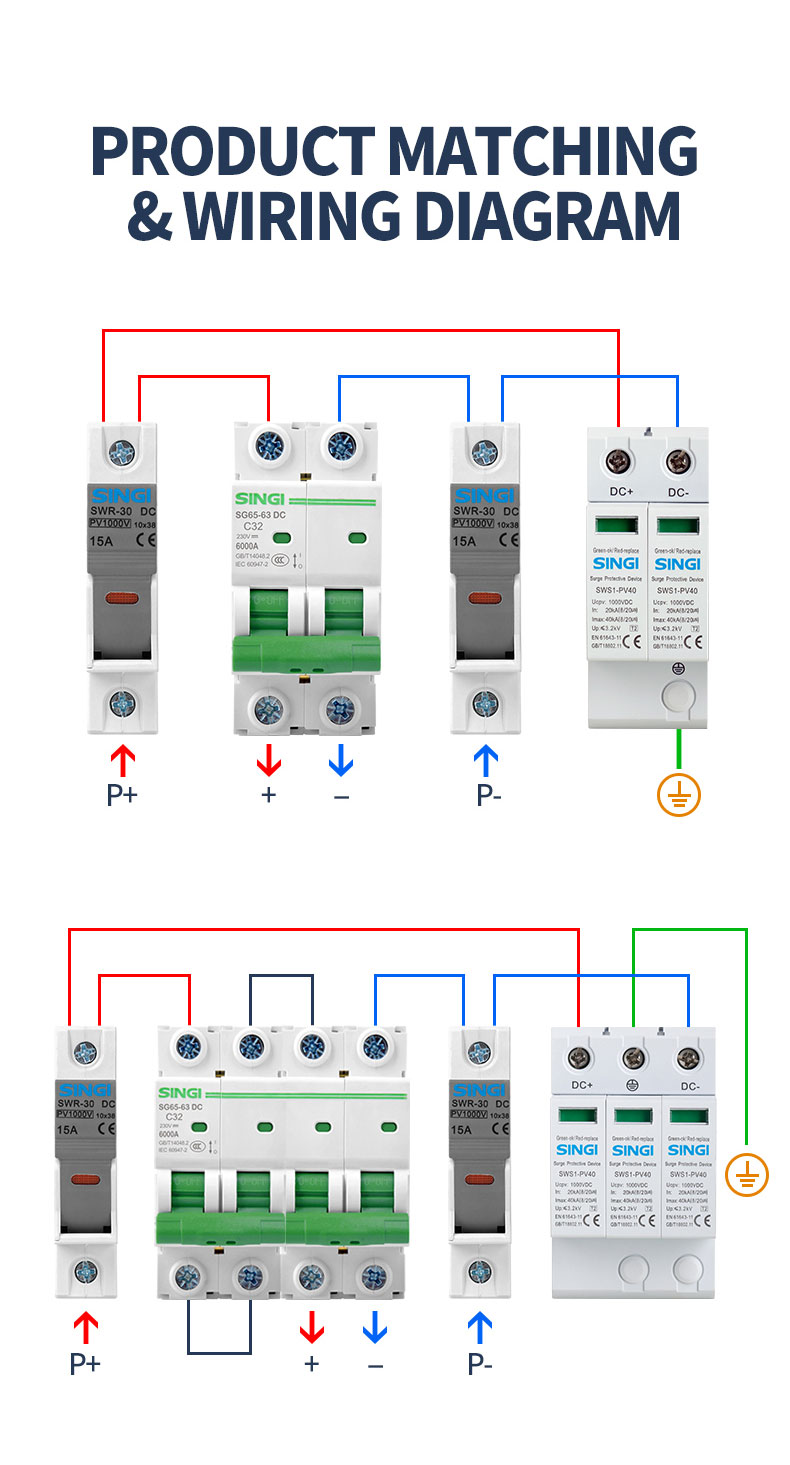
Fuses are commonly used in solar photovoltaic systems under the following conditions:
1. In solar battery circuits. Fuses protect batteries from current overloads during charging and discharging. They help prevent battery overheating, fires, and explosions.
2. With power inverters and charge controllers. Fuses protect these electronic components from damage due to overcurrent events. They help improve inverter and charge controller reliability and service life.
3. In long cable runs and combiner box circuits. Large cable circuits and combiner boxes concentrate more power, increasing the risk of overcurrent faults. Fuses protect these higher-power circuits.
4. Where rapid fault detection and system isolation are required. Fuses act fast to interrupt overcurrent flows, quickly isolating faults to prevent them from propagating to other parts of the system.
The main purposes of fuses in solar PV systems are:
1. Providing overcurrent protection. Fuses interrupt excessive current flows to protect conductors, devices, and components from overheating damage.
2. Enabling quick fault detection and system isolation. Fuses act fast to isolate faulty circuits and components in the event of a short circuit or other overcurrent scenario.
3. Protecting batteries and electronics. Fuses sized for battery and inverter circuits help ensure these components operate within safe current ratings.
4. Improving system safety. By isolating overcurrent faults quickly, fuses reduce fire and electric shock hazards for installation and service personnel.
5. Maintaining system uptime. Fuses minimize potential damage due to overcurrent events, reducing time-consuming fault location and repair to maximize power generation uptime.